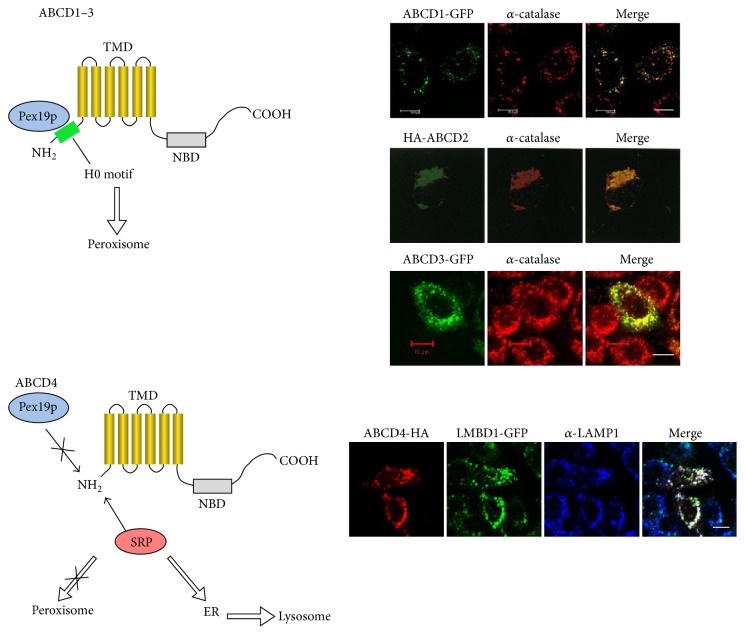Figure 2.
Targeting and localization of the ABCD transporters. For the trafficking of the ABCD transporters, an NH2-terminal H0 motif plays an important role. The ABCD1–3 forms possessing this H0 motif are selectively captured by Pex19p and destined for peroxisomes. In contrast, ABCD4 hardly interacts with Pex19p because of its lack of the H0 motif, and, as a result, ABCD4 is recognized by a signal recognition particle (SRP) and integrated into the ER membrane. Subsequently, ABCD4 is translocated to lysosomes through the association with LMBD1. GFP-tagged ABCD1 and ABCD3 were expressed in CHO cells. The distribution of ABCD1 and ABCD3 was compared with that of peroxisomes stained with anti-catalase [36]. The localization of ABCD2 was cited from [6] with some modification. HA-tagged ABCD2 was expressed in COS cells. The distribution of HA-ABCD2 was compared with that of catalase. HA-tagged ABCD4 was expressed in CHO cells stably expressing LMBD1-GFP [17]. The subcellular localization of ABCD4-HA and LMBD1-GFP was compared with that of lysosomes labeled with anti-LAMP1. Bar, 10 μm.

